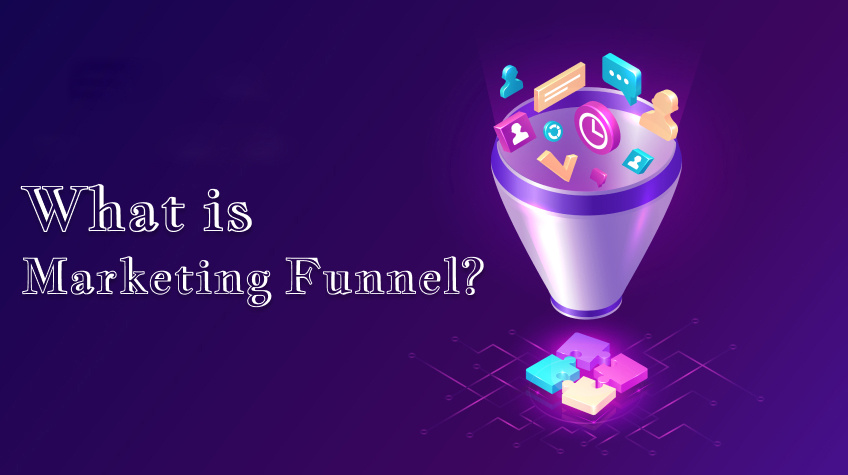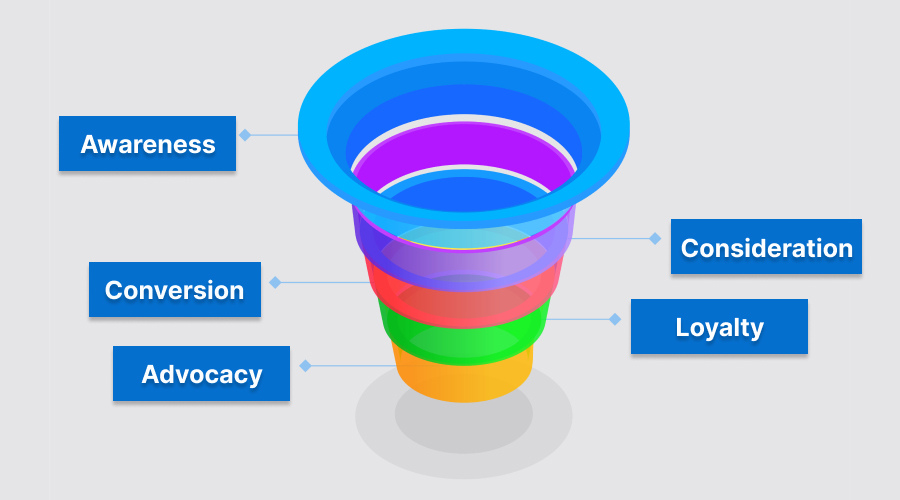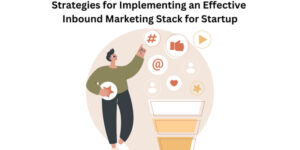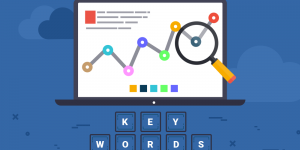
The marketing funnel appears to be the focus of everyone in the marketing business. And, why not? After all, the marketing funnel is one of the most important aspects of any business. Every business, be it small or large, needs to have a proper marketing funnel in place to continually bring in new leads and clients.
Do you want to know more about the marketing funnel?
If yes, then continue reading this post.
Here is everything you need to know about the marketing funnel, including the importance of marketing funnels and their main components.
Ready?
So, let’s take a dive in…
Table of Contents
What Is A Marketing Funnel, And How Does It Work?
The Marketing Funnel – How It Evolved?
- Lead Magnet Funnel
- List building funnel
- Webinar Funnels
- Social Media Marketing Funnels
- Email Marketing Funnels
- Video Sales Funnel
- Freemium Model Funnels
So, what’s the point of a funnel?
Marketing Funnel: How Important Are They?
- Funnels Make The Customer Journey Easier
- Funnels Help You Establish Relationships With Your Customers
- Funnels Help You Make Better Strategies
Marketing Funnel Structure – The Marketing Funnel Explained
How to Start Marketing Funnel Strategy – A Step-By-Step Guide
2. Decide on the stages your funnel will have
3. Add Marketing Techniques to Each stage
What Is A Marketing Funnel, And How Does It Work?
The Marketing Funnel guides prospects through the customer experience and converts them to paying customers. In a nutshell, your customer’s journey with you is described by a marketing funnel.
Marketing funnels chart the path to conversion and beyond, from the moment customers discover about your company to the moment they make a purchase. After careful investigation, a marketing funnel can help you understand what your organization needs to do to influence customers at different stages. Successful businesses use marketing funnels to increase sales, loyalty, and brand awareness effectively.
A marketing funnel is also defined as a series of touchpoints – emails, videos, blog posts, webinars, PDFs, and other useful messages – that a prospective client gets or interacts within a certain order that leads them along the road of making a purchase.
The Marketing Funnel – How It Evolved?
Elias St. Elmo Lewis developed a model to show the stages of a customer’s connection with a firm called the “AIDA” Model. According to the “AIDA” paradigm, every transaction entails Awareness, Interest, Desire, and Action.
Awareness: The prospect is aware of what exactly they are looking for.
Interest: Based on their needs, the prospects express interest in a set of services or products.
Desire: The prospects start to consider a particular brand(s).
Action: The prospect decides whether or not to buy.
Types of Marketing Funnel
Here are the different types of marketing funnels:
1. Lead Magnet Funnel
A lead magnet funnel is simply one in which you collect leads by offering something away in exchange for their email address. It might be in the shape of a video, a report, or anything else you choose, as long as you receive their email address in exchange.
2. List building funnel
List building funnel allows you to create sign-up pages and send follow-up emails to your contacts. It can be used to generate new leads and engage the existing contacts on your list by sending them automated messages.
3. Webinar Funnels
A webinar funnel is similar to a traditional sales funnel in that a webinar serves as both a lead magnet and a mechanism to convert leads. It all starts with getting people to visit your webinar landing page. That’s the point you can gather information from your visitors in order for them to become leads.
4. Social Media Marketing Funnels
A social media marketing funnel is the route that clients take when they interact with your company on social media. Your consumers will pass through a social media marketing funnel at each stage of the user journey.
That is why it is vital to have your brand’s pages on all social media platforms and to keep them updated so that your customers may connect with you there.
5. Email Marketing Funnels
An email marketing funnel represents a customer journey. It demonstrates how your subscribers progress from being aware of your brand to make a purchase and finally becoming brand advocates.
Make sure you’re using email marketing correctly. Rather than bombarding your potential prospects with emails, cultivate your relationship with them by providing value. Rather than being irritating, provide them value. The right email sales funnel helps businesses accomplish their goals.
6. Video Sales Funnel
A video sales funnel is a funnel that attracts, educates, and converts buyers by using a series of films. It’s a terrific approach to streamline customer acquisition when done correctly. It is active 24 hours a day, seven days a week, and can shorten the sales cycle.
7. Freemium Model Funnels
Freemium is a combination of two words, “free” and “premium.” Most businesses use freemium model funnels to provide clients with free services in addition to paid ones. The free options are usually the basic versions of the service, whereas the paid options are the improved or premium versions.
So, what’s the point of a funnel?
Customers walk through a funnel that symbolizes the entire process of knowing, trusting, thinking, trying, and buying. Initially, the whole thing starts with knowing or becoming aware of learning about your company. Similar to a funnel, a marketing funnel also narrows as you go down it. The narrower part of the funnel shows the customers dropping out. This implies that only the most qualified and motivated customers will make it to the bottom rest will drop in the second or third stage.
However, it is important to have the right strategies in place to create funnels. Remember that the marketing funnel is indispensable to your success. You need a marketing funnel to grow your business and improve your bottom lines.
Marketing Funnel: How Important Are They?
Of course, the primary objective of building a funnel is to generate more qualified leads. However, there are added advantages of marketing funnels, which are as follows: but there are other advantages as well.
1. Funnels Make The Customer Journey Easier
A funnel depicts each stage of the customer journey. If you really want to create more leads for your business strategically, a funnel can help. Implementing marketing funnels makes the customer journey easier, which in turn leads to more business and improved bottom lines.
2. Funnels Help You Establish Relationships With Your Customers.
Building good relationships with your customers is a necessity in today’s cutthroat competitive world. But the truth is it’s not very easy to develop a relationship with customers. Basically, you need to understand your customers’ requirements to build good relations with your clients. A marketing funnel can help you achieve your goals, whether you want to increase online sales, drive traffic to your physical store, or grow an email list. It’s a strong tool for bringing visibility to every step of the client relationship.
3. Funnels Help You Make Better Strategies.
A marketing funnel depicts the point at which your clients abandon ship. Analyzing your marketing funnel can help you fine-tune your strategy.
Marketing Funnel Structure – The Marketing Funnel Explained

Here are the five stages of the marketing funnel:
1. Awareness
Awareness is the first stage of the marketing funnel. This is the stage when your prospects become aware or acquainted with your company.
Since your customers are new to your company, which clearly means that they don’t know much about your company. This is the stage where you need to concentrate on demonstrating the value of your service. Make sure you provide your customers with the right and in-depth details.
Pro Tip: Creating branded content can help you engage your audience and encourage future interaction. So make sure to have unique and informative content that can help your customers understand your business.
2. Consideration
This is basically the contemplation phase. Once your potential customer becomes aware of your company, they start to contemplate it. This is the phase where you can build a relationship with your potential customers by making them eager to learn more about your brand.
3. Conversion
Of course, whatever effort you put in your business is for converting your leads to customers. Though this is not an easy stage, it becomes easy if the above two stages are well-timed. By this time, your customers will be aware of your brand and will be able to comprehend your product’s value. Now they will decide whether or not to buy your product or services.
Related: Tips For Writing Content That Aligns with Your Buyer’s Journey
You may experience a lot of dropouts at this stage if you haven’t concentrated on the above two well. This is the stage where you need to be proactive, tell your customers how you’re different from your competitors, and why your services are ideal for your customers.
Pro Tip: The best way to have maximum conversions is to highlight your service’s features, perks, and advantages so that your customers can differentiate between you and your rivals.
4. Loyalty
After conversion comes the loyalty phase, this is the phase where you need to retain your existing customers. Gaining customer loyalty takes a lot of planning and strategizing so that you can retain your customers. You need to have loyal customers to grow your business and improve your bottom line. Therefore, devising a proper strategy is essential.
Creating loyalty programs with regular discounts, running social media contests, having regular email conversations can help you have loyal customers or gain customer loyalty.
5. Advocacy
This is the final stage of the marketing funnel; only when your clients become raving fans will you reach this stage of the marketing funnel. This is the stage where your customers would want to buy from you again.
That’s not it. Happy customers not only return to you but also talk about your firm and refer you to their friends and family. But that would be only possible if you successfully earn their affection and loyalty.
Pro Tip: You can establish a referral program to increase word-of-mouth about your company and encourage clients to suggest you to others.
How to Start Marketing Funnel Strategy – A Step-By-Step Guide
Creating a marketing funnel strategy is crucial for your business. Here is a step-by-step guide to create from scratch:
1. Know Your Audience
Knowing who you’re talking to is the first step to creating a marketing funnel strategy. Before you can construct a marketing funnel to target and convert people into consumers, you must first figure out who you want to target.
There are myriad of ways you can learn about our target clients, such as surveys, social media handles, direct input from existing consumers, and web analytics data. Not only should you know who your target clients are, but you should also know how they interact with your website and content.
Knowing who you’re talking to is crucial to creating a buyer journey map. The first step in creating a robust marketing funnel is to understand how your clients behave online and engage with your website.
Once you know your target audiences’ online habits, you’ll be able to shape your funnel accordingly. Aside from that, you’ll know which steps to be included in the funnel.
Pro Tip: Blogs are a wonderful way to know your audience. More often than not, companies use their blogs to route their traffic to the product or service websites. In such scenarios, your blog posts serve as a top-of-funnel marketing tool.
2. Decide on the stages your funnel will have.
Marketing funnels can have many stages, such as three, five, and some even have seven stages. Calculating how many stages will be there in your funnel is crucial. Once you know your prospects’ path before they acquire your products or services, you can decide how many stages your funnel will have.
Understand that a marketing funnel strategy is simply a means of directing more people in the proper direction on their trip. As a result, the stages of your marketing funnel will be based on your buyers’ journey map.
A simple three-stage marketing funnel strategy will have the following stages:
i. Awareness (Top of the funnel)
At this stage, the goal is to reach out to more individuals, raise their awareness of your brand and products, and pique their interest.
A prospect’s initial impression of your brand is formed when they hear about it for the first time. You want to obtain as many customers as possible at this stage because some of them will drop out as they progress down the funnel.
ii. Desire (Middle of the funnel)
The next step in the process is desire. This is the stage where the prospect has heard of your brand and is interesting but is undecided about making a purchase. This is a very crucial stage for both prospect and seller. Of course, the seller knows that a prospect wants to buy; however, the prospect is still in the process of making a decision.
This is the stage where you’ve to let the prospects know how your products are superior to those offered by competitors. At this level, marketing methods come in handy. You’ll develop a marketing strategy to inform the potential customer about the value you provide and what sets you apart. If you succeed in establishing a relationship with the prospect at this stage, they’ll surely advance to the next level. However, if you fail to persuade your prospect at this stage, they will simply abandon you.
iii. Action (Bottom of the funnel)
This is the funnel’s third and final level, where prospects have already expressed an interest in making a purchase and all you have to do now is clinch the deal. Because most prospects would have fallen by this point, the bottom of the marketing funnel will always be narrower.
This is the stage where you need to be proactive and tell your customers how you’re different from your competitors and why your services are ideal for them.
3. Add Marketing Techniques to Each stage
The final step in constructing a marketing funnel strategy is to incorporate marketing methods into each level. After you’ve identified the stages in your marketing funnel strategy, you’ll need to figure out which marketing tactics will perform at each level.
The marketing methods to be employed are entirely up to you; you are free to use as many as you wish. However, it is recommended that you use the more effective ones for your business. It’s not a good idea to clog up your marketing funnel with unneeded processes. Here are a few of the most common marketing funnel strategies employed at various marketing funnel stages.
i. TOFU (Top-of-the-Funnel)
- Social media marketing works great when at the awareness stage, also known as TOFU or top of the funnel. It is one of the most common and inexpensive marketing strategies to increase social traffic to your website.
- Another wonderful way to make your customers aware of your brand is to write blog posts. Make sure your blogs are informative, unique, and engaging to drive traffic. Aside from that, you can also come up with video content and other valuable material to attract traffic to your website.
- Besides these, influencer marketing campaigns can also be considered. These campaigns help businesses raise brand recognition and reach a larger audience.
- Another wonderful marketing strategy today is paid advertising campaigns. Paid advertising campaigns are aimed at the target demographic and are the best ways to reach the right audience.
- Search Engine Optimization is yet another powerful way to attract the right audience. SEO tactics are a common tool to increase organic traffic. You have to make sure to use the right keywords and follow Google’s guidelines while writing blogs. Good blogs with proper SEO rank on search engines.
- Videos and podcasts are also excellent content formats for attracting more potential clients. Make sure to make short, crisp, and concise videos that most people like.
- Lastly, you can consider running contests on social media handles to attract customers and spread brand awareness.
ii. MOFU (Middle-of-the-Funnel)
This is the point at which your leads will either continue to interact with your brand or abandon it. Here are some of the most common marketing strategies you can use at this point.
- Influencers’ product reviews, unboxing, and trial videos are quite helpful at this point.
- Videos of customer reviews, case studies that demonstrate how you assisted other customers, and anything else that demonstrates the value of your products or services are good ways to let your prospect
- know how you’re different from those selling the same products or services.
- You can also use user-generated content to give social proof and increase brand trust.
- Aside from that, ebooks and whitepapers are also effective in engaging people and increasing their buying intent.
iii. BOFU (Bottom-of-the-Funnel)
This is the stage where you will be left with only those who intend to buy. The rest of your prospects would have dropped by now. So, only leads with high buy intent will be present at this level. All you have to do now is guide them in the right direction by giving them something additional.
Take a look at some of the most common bottom-of-the-funnel marketing strategies:
- Offering exclusive deals and discounts can help you entice your customers to buy.
- Create a sense of urgency by running limited-time offers. This is one of the best ways to persuade prospects to buy, those who wish to buy will act for sure.
- Free product demonstrations and trials are pretty common among marketing strategists. This is the way you can persuade customers to sign up and use your items before asking them to buy.
- Create scarcity by showing that only a limited amount of stock is left.
So, these are some of the tactics you might employ at the bottom of the funnel to persuade the prospect to buy. Always keep in mind that converting potential clients isn’t the only goal. You should also urge them to stay loyal to your company and recommend it to their friends and relatives by giving away custom pens with logo.
To Sum It Up…
Marketing funnels are crucial to the success of your business. They help you understand the complete customer journey while improving awareness and sales!
It’s time to construct a marketing funnel if you haven’t already. Start with a simple marketing funnel if you’re entirely new to it.
Recognize that a well-designed marketing funnel may make a significant difference. You may make a fantastic marketing funnel by following the steps outlined above.
So, don’t wait any longer. Begin right now!






